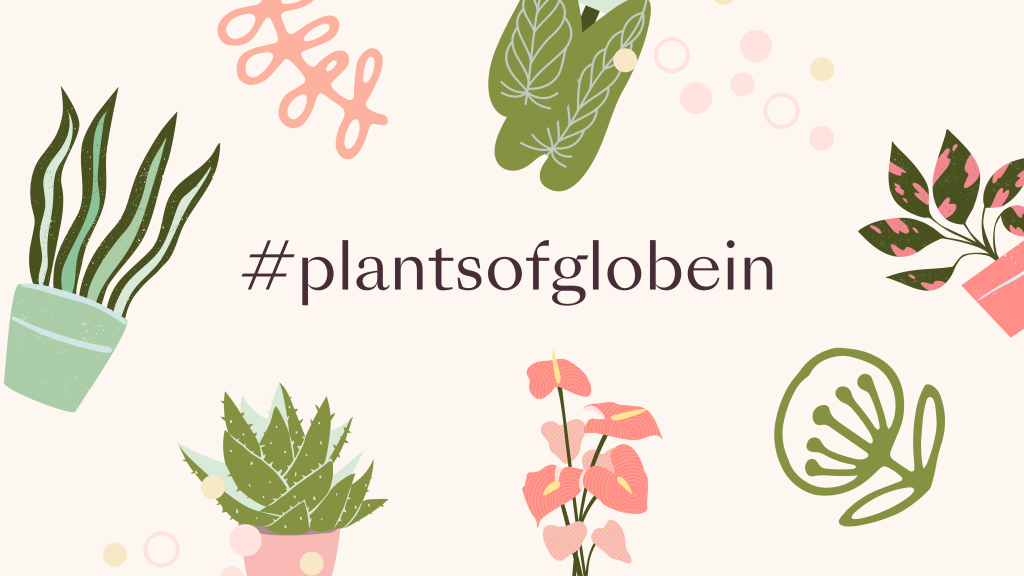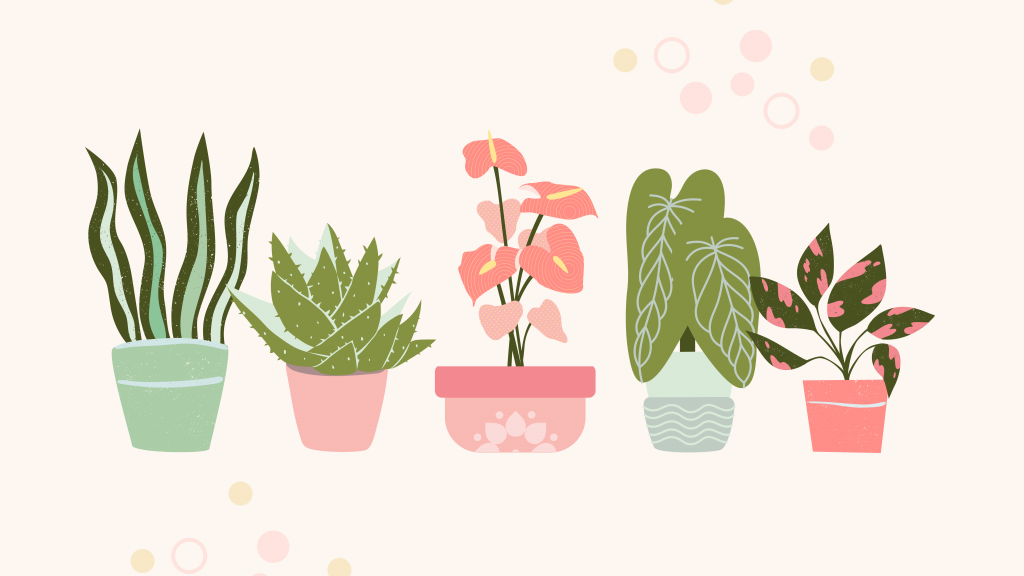“You better not kill my plant,” my friend said to me, as she shoved something called a Snake plant into my arms.
I had been helping my close friend move out of her apartment as she prepared for a long trip. As the walls of her apartment walls grew barren and stacks of cardboard boxes began to climb, all that was left of her possessions were a few houseplants in neat little terra-cotta planters. She suddenly looked at me as if to say, “You owe me.”
That afternoon I found myself with four new plants. I was worried about their long-term health in the hands of such an inexperienced plant owner. In fact, I was sure that they’d wither and die within the first weeks of their adoption.
But here I am, a year later, and her plants have more than doubled in size. They’ve become a part of me and my home, and I still haven’t returned them. Oops!
Whether you’re an experienced green-thumb or are just admiring your first succulent on your desk, then you know that plants can quickly become a part of you. Houseplants infuse your home with life. They can be a great hobby and pastime. And you might discover that they can also become a bit of an addiction!
Perhaps most importantly, caring for plants is actually good for you. Whether it’s a luscious garden that you source meals from, or a cozy indoor “jungalow”, your green space has many health benefits. In fact, one study found that household gardening consistently supports high emotional well being.
So, keep reading for tips on growing easy indoor plants, and a challenging one for the experts out there!
Your Indoor Nature Connection
Cultivating environmental stewardship is one of the Fair Trade principles, and a central concern of GlobeIn’s business. But how does owning a simple houseplant relate to connecting with and caring for nature?
Environmental stewardship is an approach to nature grounded in conservation and sustainability. For businesses, this can mean using eco-friendly production practices. For individuals, this can mean cutting down on waste and recycling more.
There are many other ways to keep nature in mind, but one of our favorites is to bring plants into your home. When you care for houseplants, you are, in one way, caring for the environment. The symbolic act of bringing a piece of nature inside and nurturing it can be a powerful tool to inspire nature conservation.
As you observe the beauty of your thriving houseplants, we hope that you’ll also notice the beauty right outside your homes. We hope that, in the long term, our love for nature and its beauty will express itself in a culture committed to doing its best to conserve our natural resources.
So, spread the word, give the gift of a houseplant, and watch the positive change you can create!
Easy Houseplants To Grow At Home
Snake Plants

This is the classic houseplant, and perhaps the best for beginners. The beauty of the snake plant is its ability to withstand drought and neglect. You can forget to water your plant over and over again, and it will still look great. Plus, it does well both in bright areas and the darkest corners, making it perfect for any indoor space. What’s not to love?
Did you know? Snake plants, or Sansevieria, can purify the air. Studies have found that they are effective at removing formaldehyde and benzene from the air.
How to care for a Snake plant:
- Don’t overwater: let the soil dry before watering. This can mean waiting a month between waterings in the winter!
- Bright indirect light is best but can adapt to both full sun and dim conditions.
- A temperature range from 70-90°F is best, protect from drafts.
Aloe Vera

Everything about Aloe Vera is soothing. Say the name, and you feel relaxed as it rolls off the tongue. Use its gel, and it soothes your skin, especially for burns. Keep it as a houseplant, and you’ll love its attractive appearance. Plus, since it’s a succulent, the Aloe Vera plant is very easy to grow.
How to care for an Aloe Vera:
- Bright, indirect sunlight, such as on a western or southern windowsill. Temperatures should be between 55-80°F.
- Water thoroughly but let the first couple inches of soil dry out completely between waterings.
Anthurium

If you’re looking to add a dash of color to your plant collection, try an Anthurium. Their large yellow, red or pink leaves make them a desirable design element for any space.
The vibrant blooms of these plants happen easily in indoor spaces. Keep in mind that Anthurium is poisonous if ingested, so keep yours out of range of pets and small children.
How to care for an Anthurium:
- Bright indirect light, and ideally warmer temperatures, such as 70-90°F.
- Water quantity depends on growth levels. Soil should be dry between waterings, and make sure to use a pot with a drainage hole.
- Ideal humidity levels are above 60%.
Prayer Plant

If you love patterns, this is the plant for you. The hefty green leaves of the Prayer plant are decorated with beautiful pink or white lines, depending on the variety. The name comes from the plant’s moving leaves: during the day, its leaves are spread out, but with nightfall, their leaves fold together, like hands in prayer.
How to care for a Prayer plant:
- No direct sunlight. Bright, indirect light is best. Temperatures of 60-80°F work best.
- Don’t let the soil completely dry out, keep it moist. Use a pot with a drainage hole to prevent water from pooling at the bottom.
- Prefers a humid environment.
Begonia Rex

If you’re looking to prove yourself as a green-thumb, this is the ultimate prize. The Begonia Rex is finicky but is well worth the care you’ll put in. It will reward you with breathtaking leaf displays in a variety of rich colors and patterns. For the ultimate in leaf beauty, consider providing appropriate humidity, distilled water, plenty of drainages, and monthly fertilizing.
How to care for a Begonia Rex:
- Keep at least 55% humidity around the plant, but higher levels work too.
- Use distilled water for waterings.
- Make sure your soil and pot drain very well.
- Don’t water often, but water heavily when you do. Soil should be dry and light between waterings.
- Fertilize once a month with a soluble houseplant feed. Nitrogen is key to leaf growth.
So, which plant strikes your fancy? We’d love to see your plants! Give us a shout-out on social media using the hashtag #plantsofglobein.

And don’t forget about planters, too! If you’re looking for stylish, handmade planters to nest your plants, check out our garden accessories.
But whether you choose to turn a whole room into a luscious jungle, or just want an ornamental plant for an empty corner, you’re playing an important part in reshaping our culture into one more conscious of the environment. Caring for plants is just one of the many ways to practice environmental stewardship, and we hope that this post has inspired you to learn more about ways to conserve our natural resources.
To learn more about the environmental stewardship principle of Fair Trade, please click here.


